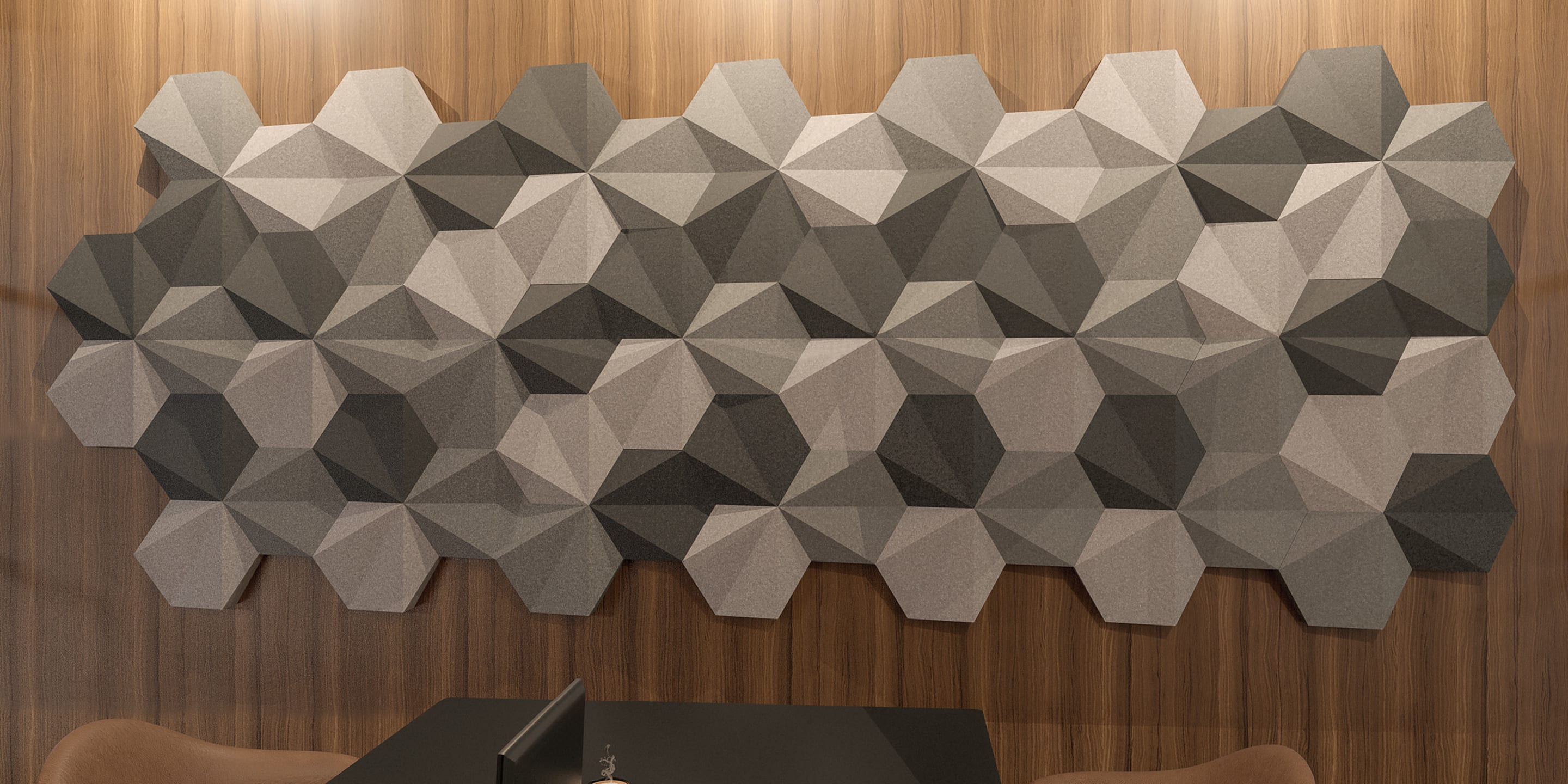When it comes to acoustic performance, the Noise Reduction Coefficient (NRC) is one of the most widely referenced metrics. It tells us how well a material absorbs sound, ranging from 0 (no absorption) to 1 (complete absorption). But here's where it gets interesting: materials can, in fact, achieve NRC values greater than 1.0.
In this article, we’ll break down what NRC really measures, why some materials outperform expectations, and what it means when you see an NRC above 1.0.
What is NRC?
NRC, or Noise Reduction Coefficient, is a single-number rating that represents a material’s average sound absorption across four key frequencies: 250 Hz, 500 Hz, 1000 Hz, and 2000 Hz.
How it’s calculated: NRC is the average of a material’s absorption coefficients at the above frequencies, rounded to the nearest 0.05.
Standards that govern it:
ASTM C423: the standard for testing sound absorption in reverberation chambers.
ASTM C634: standard terminology relating to building acoustics.
Isn’t NRC capped at 1?
That’s a common misconception. Many people think NRC is a percentage and therefore must max out at 1. But in reality, NRC is a coefficient representing the material’s ability to absorb sound at specific frequencies. It is common for certain materials, especially at higher frequencies, to achieve NRC values greater than 1.
How can NRC be greater than 1?
The reason lies in the testing process:
1. Sound absorption is tested in a reverberation chamber, where the decay rate of sound is measured with and without the material in the room. The difference in decay rates in the reverberation chamber with and without a test specimen across frequencies is used to calculate absorption coefficients.
2. Higher frequencies, higher performance - materials can absorb sound more effectively at higher frequencies, sometimes resulting in coefficients greater than 1. For example, Zintra Beams tested at an NRC of 1.50, demonstrating high absorption capabilities.
3. Zintra Product Examples:
Zintra Beams: NRC 1.50
Emerald Box Tiles (small): NRC 1.15
Emerald Box Tiles (large): NRC 1.05
Hex Box Tiles: NRC 1.10
The smaller tiles typically perform better due to greater surface area and specific resonant frequencies.
Why the confusion?
It mostly comes down to differences between testing standards:
ISO 11654 (International Standard): Caps absorption coefficients at 1 in reporting, but captures absorption coefficient above 1 in testing, which can cause confusion.
ASTM Standards: Do not limit NRC values, allowing materials to have absorption coefficients over 1.
ASTM also uses the Sound Absorption Average (SAA), which looks at a broader range of frequencies and provides a more detailed view of absorption performance across 12 frequencies. Like NRC, SAA can also exceed 1.0.
Key takeaways
NRC values can exceed 1.0 - especially for materials that excel at absorbing higher frequencies.
The NRC is a coefficient, not a percentage, and reflects the material’s performance across four key frequencies.
ISO and ASTM differ, which can lead to confusion—but both acknowledge absorption coefficients over 1 during testing.
Curious to hear more about how Zintra's acoustic solutions stack up?
Explore the full range of Zintra’s high-performing products here, or get in touch for tailored acoustic advice.



